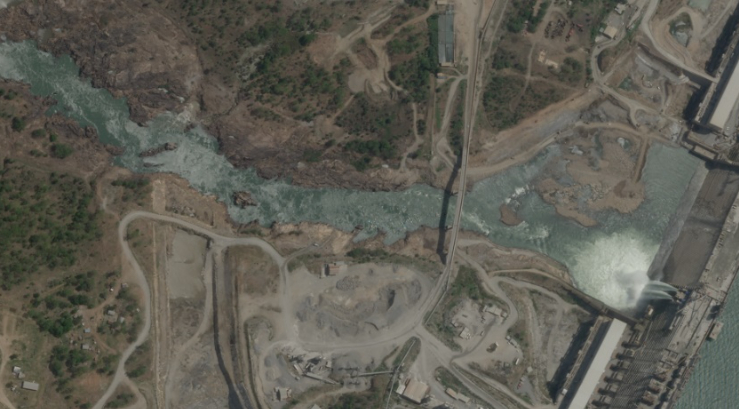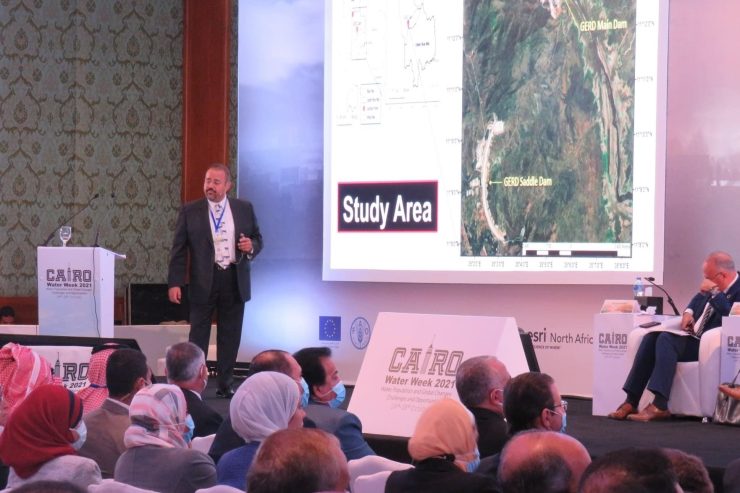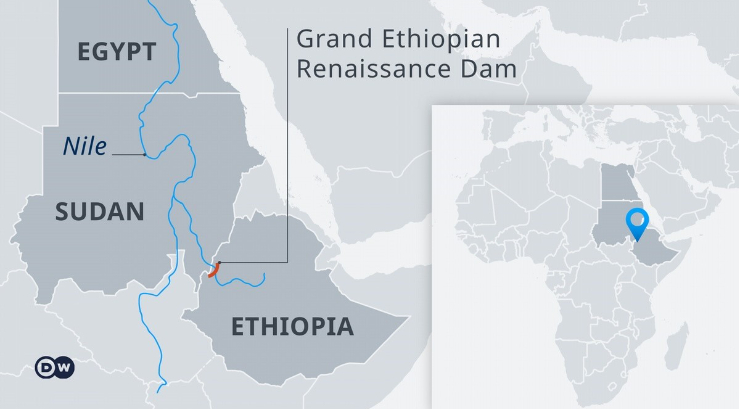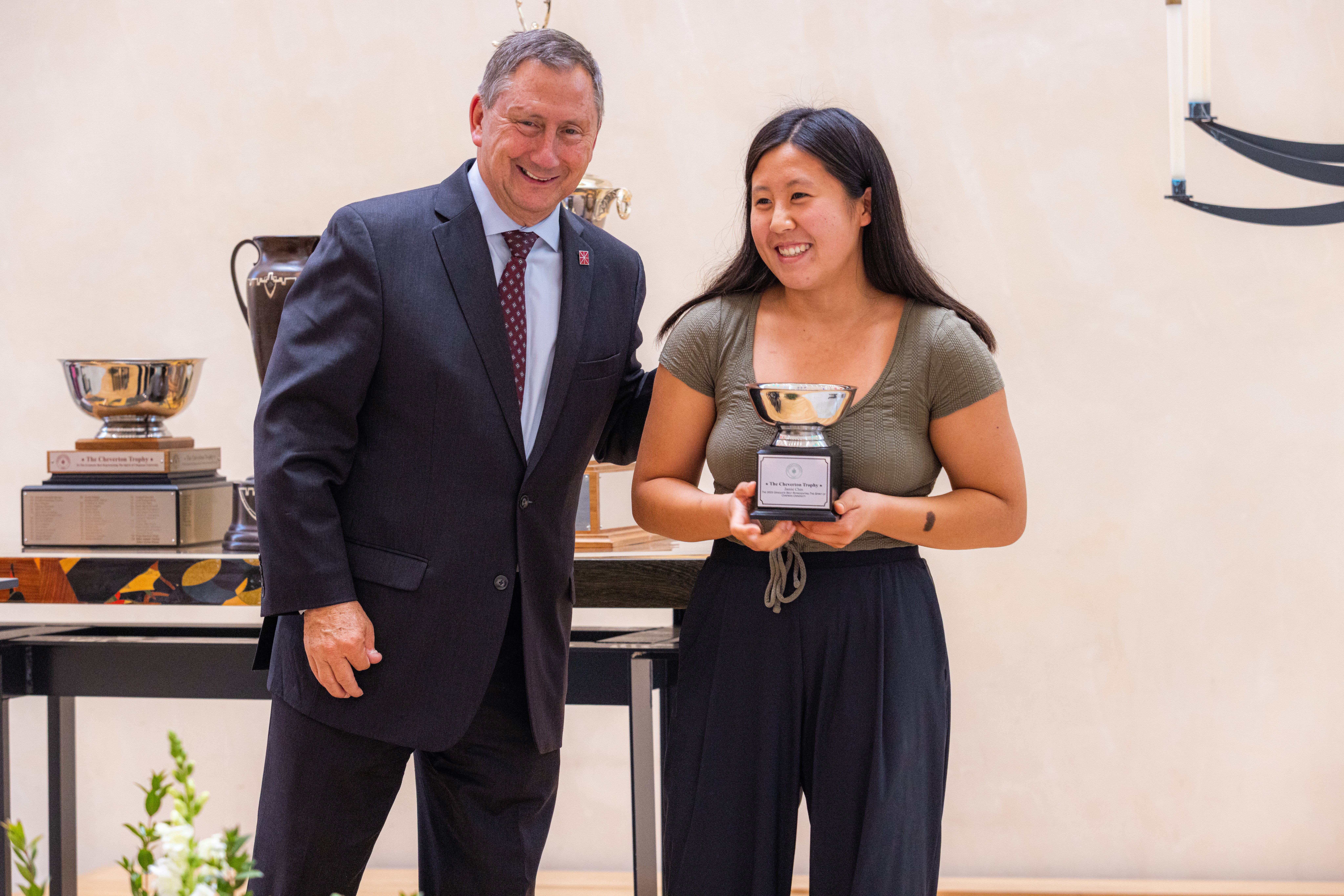A Chapman University research study led by earth systems science professor Hesham El-Askary has revealed potentially dangerous stresses in the Grand Ethiopian Renaissance Dam (GERD), a massive and controversial project in the late stages of construction on the Blue Nile in Africa.
Satellite imagery processed using sophisticated computer technology in El-Askary’s Earth Systems Science Data Solutions Lab at Chapman indicates an increasing risk that the dam may fail, imperiling millions in Sudan, directly downstream from the project.
The data from more than 100 satellite images captured between December 2016 and July 2021 shows gradual sinking at both ends of a concrete structure that is the main component of the dam. Both sides of the structure have moved downward, but not uniformly, making the concern more acute, said El-Askary, Ph.D.
If the downward movement continues, the concrete is at risk of cracking, the professor said, as water is added and the pressure intensifies.
“The structure has no capacity for elasticity. As one side pushes against the other, there’s risk of fracture in the middle,” said El-Askary, who is also director of computational and data science graduate programs in Chapman’s Schmid College of Science and Technology.
If construction on the Ethiopian dam project continues and the reservoir reaches its projected capacity, the dam would be required to support 74 billion cubic meters of water. The research report says that a dam failure would threaten the lives of 20 million people in Sudan.

The research study was published in September in the journal Remote Sensing.
The interdisciplinary project team includes Chapman researchers Erik Linstead, Ph.D., associate professor of computer science and machine learning; Tom Piechota, Ph.D., professor of environmental science and policy with expertise in hydrology; and Daniele Struppa, Ph.D., Chapman president and an internationally recognized mathematician.
Other contributors include Chapman data science faculty member Nicolas LaHaye ’13 (Ph.D. ’21), graduate research assistant Rejoice Thomas (MA ’20, Ph.D. ’23) and former Chapman post-doctoral researcher Wenzhao Li (Ph.D. ’19), now a research associate in climate modeling and high-performance computing at the University of Texas, Arlington.
The remaining research team members are Egyptian government officials — Amr Fawzy of the National Water Research Center and Mohamed Abdelaty Sayed, Ph.D., of the Ministry of Water Resources and Irrigation.
El-Askary gave a talk on the research during the Cairo Water Week conference, Oct. 24-28 in Egypt, where there was widespread media coverage of the study’s findings as concerns about the dam continue to grow.

The findings in the Chapman research report are based on interpretations of satellite images using a state-of-the-art computer technique called Differential Synthetic Aperture Radar Interferometry in El-Askary’s lab.
“The data is very critical and very accurate,” El Askary said. “The accuracy of the technology is one reason everyone is so concerned about the risk.”
He added that his role as a scientist is to raise concerns based on the findings of the team’s research.
“I’m not an engineer,” El-Askary said. “I’m an earth system scientist who has observed something alarming and now is shedding light on it.”
The GERD dam project has been fraught with controversy throughout its development, creating conflict between Ethiopia, Egypt and Sudan, all of which depend on the Nile for resources.
Beginning in 2011, Ethiopia has sought to develop the massive dam project to provide hydro-electric power to its citizens and to the region. Egypt has fought the project, fearing negative effects from changing the flow of the Nile.
In recent years, multiple mediation efforts have sought to broker a project agreement between Ethiopia, Egypt and Sudan without success.




